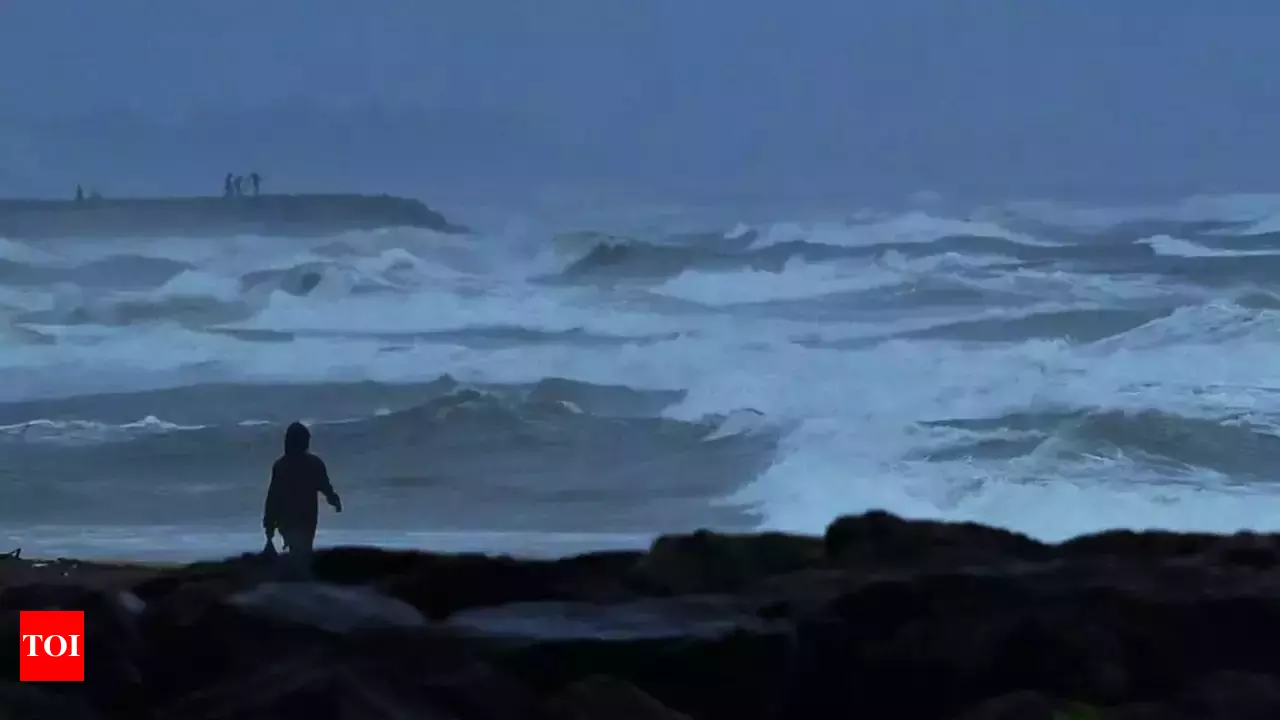Introduction to Cyclonic Storm Fengal
Cyclonic storms are one of nature’s most powerful phenomena, capable of causing widespread destruction and havoc. One such storm, Cyclonic Storm Fengal, gained significant attention in recent years. This article delves deep into the origins, development, and impacts of Cyclonic Storm Fengal, its tracking, and the aftermath it left behind.
1. Understanding Cyclones: A Brief Overview
Before diving into the specifics of Cyclonic Storm Fengal, it’s important to understand what cyclones are and how they form. Cyclones are large-scale air masses characterized by low pressure at the center, surrounded by strong winds and rain.
1.1 How Cyclones Form
Cyclones form over warm ocean waters where low-pressure systems develop. These storms are driven by warm, moist air rising from the ocean, creating a rotating system of winds. Once the conditions are right, a cyclone intensifies into a full-fledged storm.
2. What is Cyclonic Storm Fengal?
Cyclonic Storm Fengal was a significant tropical cyclone that affected regions in South Asia, particularly the Bay of Bengal. It followed a well-known pattern of cyclonic development but caused notable concern due to its trajectory and the damage it inflicted.
2.1 The Genesis of Fengal
Fengal originated as a low-pressure area in the central Bay of Bengal. It started to intensify rapidly, drawing moisture from the warm waters of the Bay, and soon evolved into a powerful cyclonic storm. Its path and strength were carefully monitored as it developed.
3. Tracking Cyclonic Storm Fengal
Tracking a cyclone is crucial to predicting its movement and potential landfall. Meteorologists use satellite data, weather radars, and oceanic models to track the storm’s path.
3.1 Path and Development
Fengal’s path took it across the Bay of Bengal, where it gradually intensified into a cyclonic storm. It moved in a northwestward direction, posing threats to coastal regions in India and Bangladesh.
3.2 Early Warnings and Preparedness
As with most severe storms, the early warnings issued by meteorological agencies played a critical role in preparing the affected regions. Authorities in India, Bangladesh, and Myanmar ramped up their readiness for potential evacuations and disaster management efforts.
4. Impact of Cyclonic Storm Fengal
Cyclonic Storm Fengal left a trail of devastation, impacting various regions through heavy rainfall, flooding, and high winds.
4.1 Heavy Rainfall and Flooding
One of the most significant impacts of Fengal was the torrential rain it brought with it. The storm caused widespread flooding, particularly in low-lying areas near the coast, affecting agricultural lands, infrastructure, and homes.
4.2 Destruction and Loss of Life
The cyclone’s wind speed, combined with heavy rainfall, caused severe damage to buildings, roads, and utilities. The worst-hit areas faced power outages, disrupted communication networks, and significant economic loss. Unfortunately, Cyclonic Storm Fengal also led to casualties and displacement of thousands of people.
4.3 Coastal Communities and Evacuations
The storm’s impact was particularly severe on coastal communities in India and Bangladesh. Authorities ordered evacuations, but the sheer scale of the storm left many vulnerable. Cyclonic winds reached speeds of over 100 km/h, and storm surges added to the damage.
5. Response and Recovery Efforts
In the wake of Cyclonic Storm Fengal, emergency response teams were mobilized quickly. Both national and local governments, along with humanitarian organizations, worked tirelessly to provide aid and recovery support to affected communities.
5.1 Relief and Aid
Relief efforts included the distribution of food, water, and medical supplies, as well as temporary shelter for displaced families. Rescue operations were launched to search for survivors and provide emergency medical care.
5.2 Long-Term Recovery
In the aftermath of the storm, rebuilding efforts began in full force. This involved restoring essential services like electricity, clean water, and transportation networks. Long-term recovery also focused on improving infrastructure to better withstand future cyclonic events.
6. Climate Change and Cyclones
There has been growing concern about the role of climate change in intensifying cyclonic storms. Rising sea temperatures and shifting weather patterns could potentially lead to stronger and more frequent cyclones.
6.1 The Role of Rising Sea Temperatures
Warmer ocean waters provide more energy for cyclones, allowing them to intensify more quickly. This trend has been observed in various parts of the world, raising alarms about future cyclones like Fengal.
6.2 Adaptation and Preparedness
Governments and communities are being urged to adapt to changing climate patterns by improving infrastructure, disaster preparedness, and early warning systems. Building resilience against natural disasters is crucial in mitigating the damage caused by future storms.
7. Lessons Learned from Cyclonic Storm Fengal
While Cyclonic Storm Fengal left behind destruction, it also provided valuable lessons in disaster management, preparedness, and resilience.
7.1 The Importance of Early Warning Systems
Fengal highlighted the critical role of early warnings. Timely alerts enabled evacuation procedures to be put in place, which saved many lives. Moving forward, improving and expanding early warning systems is crucial to disaster management.
7.2 Community Involvement in Preparedness
Communities themselves play a crucial role in disaster preparedness. Local knowledge, community cooperation, and effective communication were key factors in minimizing casualties.
8. Conclusion
Cyclonic Storm Fengal was a reminder of the powerful forces of nature and the vulnerability of coastal regions. Its impacts were devastating, but the storm also showcased the strength and resilience of affected communities. As we move forward, it is essential to learn from the lessons of such storms to better prepare for the future.
